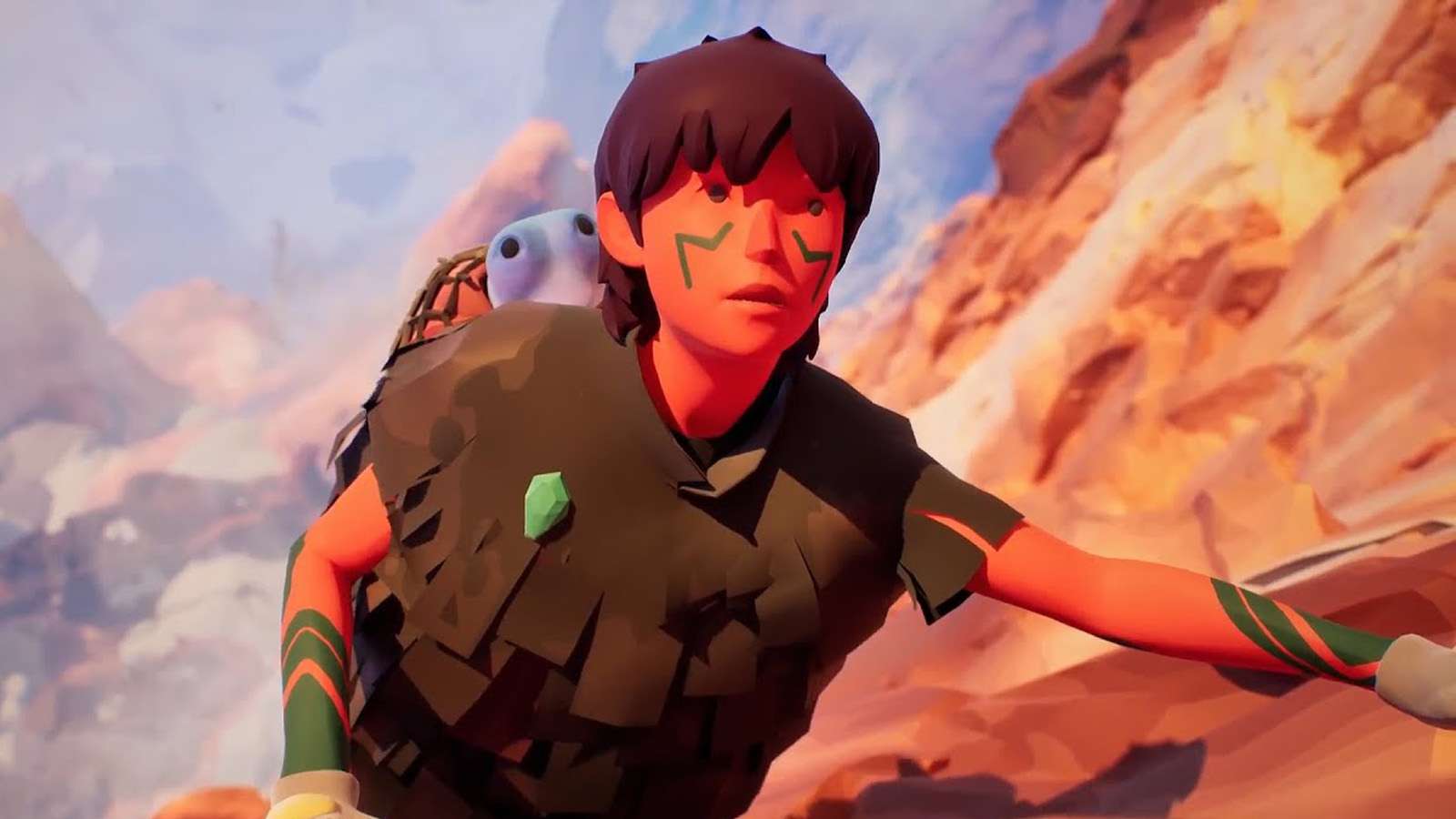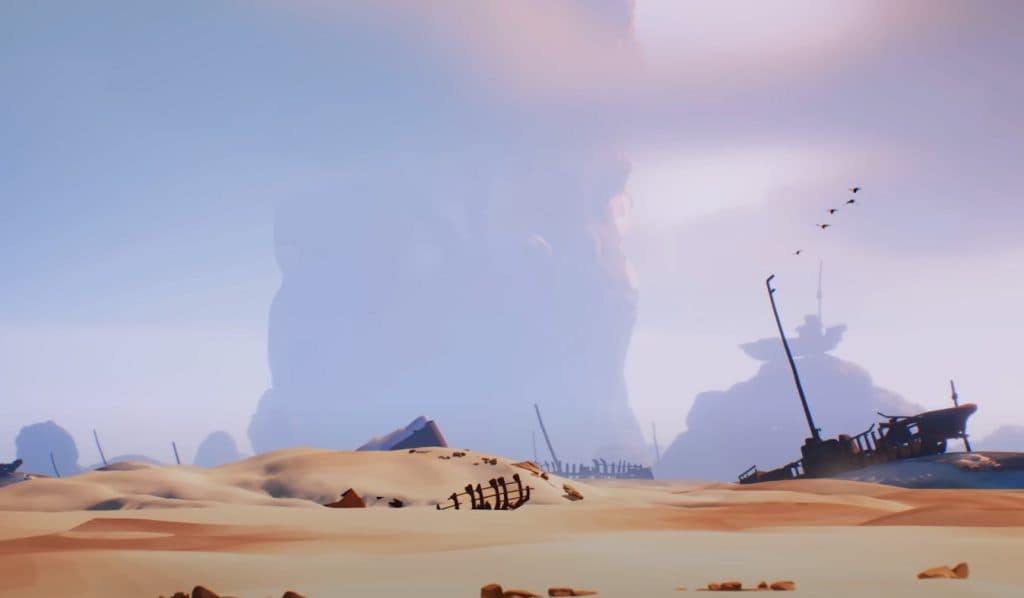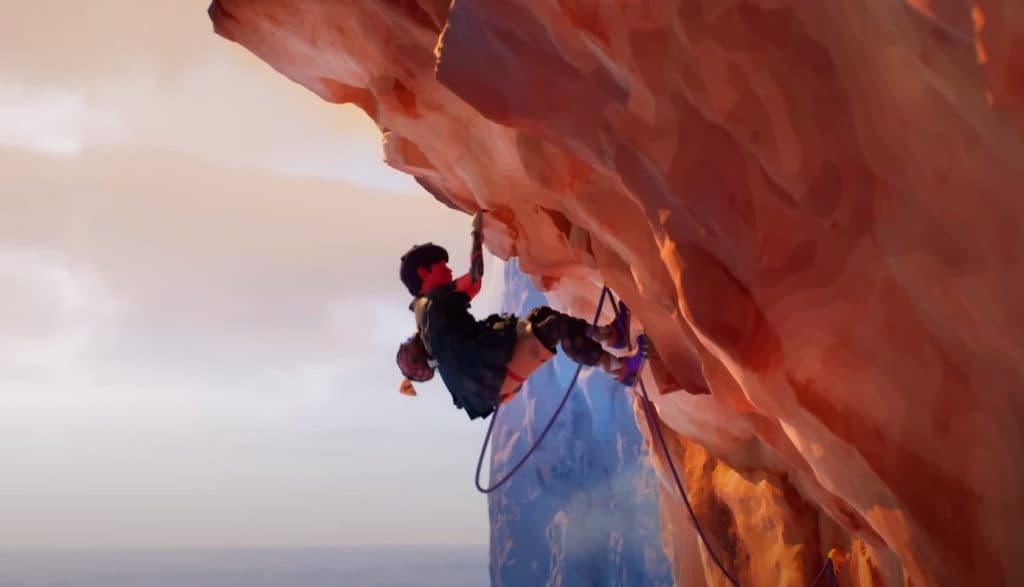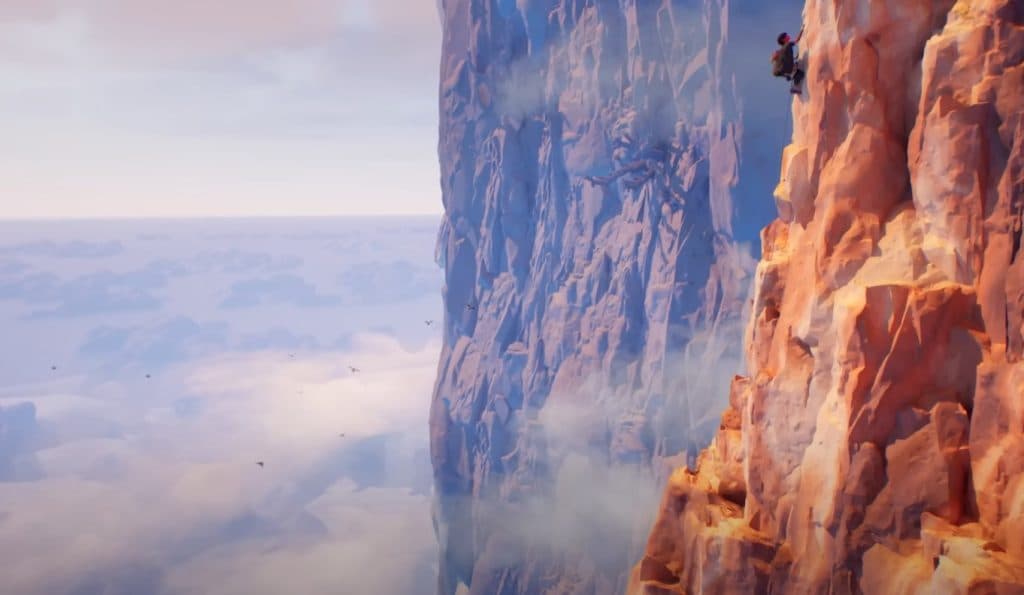Jusant hands-on preview: A breathtaking climb through wondrous dystopia
 Don't Nod
Don't NodJusant is an atmospheric action-puzzler.
Don’t Nod, the developer behind Life is Strange, is aiming to reach new heights with its latest venture, Jusant. With an incredibly well-thought-out and atmospheric world to explore, the sky is no longer the limit in this action-puzzler.
Packed full of lore and indulgent world-building, Jusant brings gamers an atmospheric and magical take on mountaineering that strives for heights elite climbers can only dream of. It’s an indie game by Don’t Nod that lives up to its name, delivering innovation and experimental gameplay that is as immersive as its visuals are stunning.
Jusant pushes the boundaries of what to expect in a puzzle game, using unique mechanics to connect players to their adventurous protagonist and utilizing the excitement of discovery to tell a story both original and yet heartbreakingly familiar.
There were times the preview build challenged me and I struggled to find where the path continued or how to reach the next handhold, but this is what adds to Jusant’s sense of adventure. The journey becomes its own story, etched into tunnels and crevices and the remains of civilization.
There is a destination, but Jusant is in no rush to reach it. Instead, it immerses its player and allows them to navigate the immense tower in their own time, offering a taste of real-life climbing from the comfort of your own home.
Visual storytelling that inspires and captivates
Entering the realm of science fiction, Jusant follows the journey of a young climber scaling a mysterious tower. While the tower has long been abandoned by its prior inhabitants, the climb is not made alone.
Accompanied by a small water-based creature, Jusant journeys through a barren wasteland that was once abundant with water and wildlife. Now only desert remains, the tower offering glimpses into the lives of those who had once called the rocky sheers their own.
I did initially think that the interiors would have benefited from being more interactive — an extra level of realism that may have aided in the immersion of Jusant’s world. But as the game progressed and the climbs themselves became more challenging, this was a minor issue I soon forgot.
There’s a story interwoven throughout the climb, found not only in the occasional scrolls and letters left behind but in the game’s design. Every new platform reached offers various paths to explore, and the desolate landscape tells its own tales — through the bleached bones of a whale carcass, pipes that have long run dry, and the wilting flora that springs to life when doused in water.
It’s a diverse environment that feels limitless, and yet it’s evident that something has gone terribly wrong. Despite its wondrous sights and magnificent views, Jusant’s world is dystopian. A sense of melancholy pervades when navigating the abandoned villages and as the story unfolds with each newly reached height, it becomes increasingly clear that there’s a mystery begging to be solved.
Where did the water go? And what does the adventure’s little water companion have to do with those immense glowing murals? Is the tower’s desertification a prediction of where our world is headed if we continue to ignore the climate crisis? Only the top of the tower will tell.
 Don’t Nod
Don’t NodInnovative gameplay offers a taste of real-life mountaineering
Jusant’s gameplay is where its unique approach shines best. Each trigger controls one of your climber’s hands and it is up to you as the player to determine which direction he moves, which hand hole he grabs, and how he navigates the rocky terrain.
The process of climbing has clearly been studied, with the character behaving in a manner that feels so real, at times I found myself holding my breath. The jumping mechanism especially adds a thrill to the “meditative” gameplay. It requires you to power up your jump and carefully aim in the right direction. And then, a leap of faith — lunging through the air in hopes of reaching your target.
While that may sound like an acrophobic’s worst nightmare, there is a helpful catch… quite literally. There’s no way to die. No matter what, a carabiner will always catch your fall. There are also three pitons that you can use along your climb to create checkpoints, saving you from the frustration of starting a long stretch all over.
Players will also need to watch their stamina. It can be temporarily reset by resting on a wall, but this is not a long-term solution and the sound of blood rushing in your ears will warn you of an imminent fall.
The intricacy of controlling the climber’s every move places you right inside the game. It’s a level of immersion I have not experienced before, turning fiction into reality. You can feel the rush of adrenaline as the climber finally grabs a ledge that had you beat, and the villages and abandoned farms offer moments of repose to calm your beating heart.
While there is still the occasional lagging or bug to be found, it is worth noting this is not the final version of the game. Considering the thought and care put into Jusant, it is unlikely that the developers are not already working on smoothing these minor issues out. And they certainly do not take away from the game’s overall enjoyment.
 Don’t Nod
Don’t NodA tranquil Mad Max dystopia at the tip of your fingers
The design and artwork are undoubtedly beautiful, with countless views that stretch out for miles and a surplus of detail to discover. Jusant uses Phong interpolation, giving the environment a smoothed and almost plastic appearance. It’s a technique commonly used for 3D graphics, as it allows developers to spend less time on texture and more time on optimizing the game itself.
The use of Phong allows for better resolution of speculative graphics and it really pays off in this case. With an environment as vast and complex as the tower in Jusant, the use of Phong doesn’t take away from the level of thought put into every corner of the game. Instead, the style allows for more detail to be spotted, even when looking from a distance, and the smoothness is appropriate for a world once encompassed in water.
It can be imagined how the roughness of every edge was once washed away, and there are deep ocean plants to encourage this thought. Jusant’s world feels rightfully alien, just as the depths of the ocean would.
At every stage of the game, there is something new to see, and the game encourages this. Platforms offer landmarks for you to get your bearings and work out the next stages of your climb. You can frequently look back down and see the path you’ve taken, adding a sense of accomplishment.
The color scheme is bright and oversaturated; the contrast between the brilliant orange of the arid landscape and the washed-out pastels of the sky creates a tranquil ambiance that really benefits the game. Every choice in design adds to the feeling of isolation in an abandoned and desolate environment.
Surprisingly, there is an essence of Mad Max: Fury Road in the game. The contrast of blue and orange, the tower looming over barren wastelands, the need for water long gone. Whether intentional or not, it was a similarity I relished. Everything that worked for Mad Max, thrives just as well in Jusant. Like a lonely and desolate take on what a functional society could have once looked like in such a dystopia.
 Don’t Nod
Don’t NodAfter hours of scaling rocky cliffs and navigating collapsed tunnels, I was completely enthralled with Jusant. By the end of the preview, the top of the tower was still not in sight and I had only just begun to uncover its mysteries. Itching for more, I will undoubtedly be hooking myself back in for the full climb when the game launches later this year.
A free demo will be available on Steam from August 28 to September 19. You will be able to play the first 45 minutes of the game, allowing you to get the hang of the mechanics and enjoy a sneak peek into Jusant’s vibrant world.



